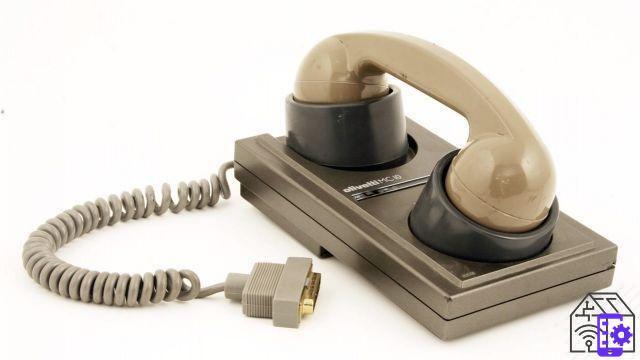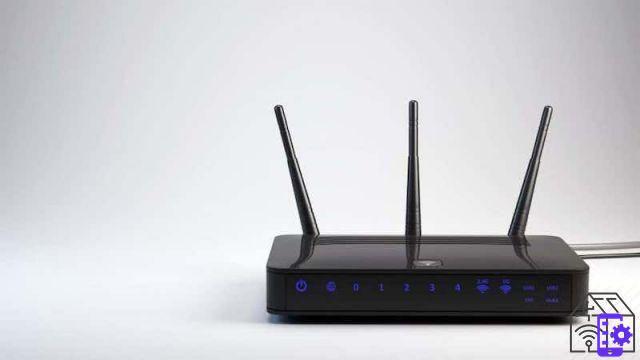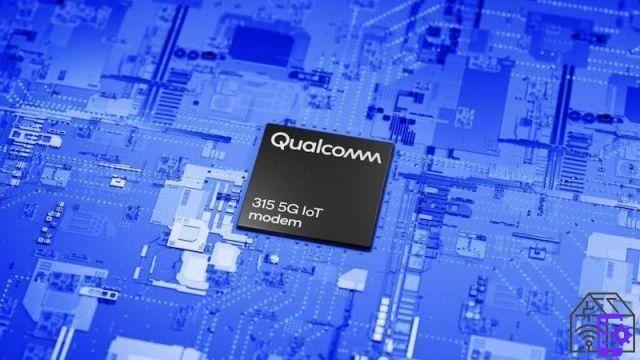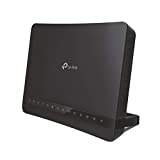
If we were to start our column as usual, that is, with a precise definition of what we are going to talk about, we would never get out of it. In the sense that today we will tell you how the modem has changed, and its definition would risk being as long as the whole article.
Let's try, synthesizing as much as possible and at the same time trying to be clear.
What is the modem
The modem: before we find out how it has changed, let's try to say what it is. Of course, everyone knows that it is that little box - once very noisy - that allows us (allowed) to surf the Internet through our telephone line. And it might as well be enough.
To be a bit more precise, we could in the meantime say that the word modem is a crasis, which arises from the union of the two English terms modulator and demodulator.
The modem is therefore that device that converts the analog pulses of a telephone line into digital signals processed by a computer. And viceversa.

The birth of the modem
The ancestor of the analog modem already existed in the XNUMXs, and was used in conjunction with teleprinters to transmit data over the telephone network. The idea was to replace the more expensive leased lines with telephone lines.
From the XNUMXs
But how has the modem changed since those glorious early models?
In this sense it is 1940 was a pivotal year. American mathematician and computer scientist George Stibitz manages to get a teletypewriter located in New Hampshire to communicate with a computer in New York. Such as? Thanks to the telephone network.
The discovery is of paramount importance: it is now possible to connect computers to each other remotely.
The novelty is immediately grasped by the US Air Force, which thanks to this invention will transfer a large amount of radar images during the first phase of the Cold War.
Military use
Before entering the houses, the modem therefore has a military use only.
From 1958 (the year in which the word modem was born) the device became part of the SAGE air defense system, connecting terminals to airbases and command centers in the United States and Canada.
The first commercial modems
To understand how the modem has changed, we have to write down another date: 1962.
That's when the first commercial modems are produced. They were called Bell 103, they were put on the market by the company AT&T, and through the frequency-shift keying function they transmitted at a speed of 300 bps.
It should be remembered that the first modems were not connected to the telephone line via twisted pair. But they housed the handset in a base with a fork and two cavities, one for the speaker and the other for the microphone. The signals intercepted by the loudspeaker were converted into electrical signals, sent for demodulation.
Towards the diffusion of modems
Two more dates are key to finding out how the modem changed, and how it started to spread. In 1968 the Federal Communications Commission, by authorizing other companies to produce modems, lapses the monopoly of AT&T.
Then, in 1977, Dale Heatherington and Dennis Hayes introduced the Hayes 80-103 °, unanimously referred to as the first modem for personal computers.
The next step will be 2400 bps modems, with double the transfer rate.

The nineties of the twentieth century
In 1990 and 1991, in just two years, the modems increased respectively to 4800 and 9600 bps (the latter used two channels on the same telephone line).
From then on, the transmission speed will continue to progress: 14.400, 28.800 and 33.600 bps.
Ma the first modem that many of us probably remember is from 1996. We are talking about the 56 Kbps device, born thanks to a patented technology of the Canadian engineer Brent Townshend.
With the arrival of USB and the small size of the modem, connecting to a home computer had become a quick and easy operation.
Discount TP-Link Archer VR1210v Modem Router EVDSL Fino A 300Mbps,...
TP-Link Archer VR1210v Modem Router EVDSL Fino A 300Mbps,...
- Warning - Check the compatibility of the product with other devices and with your ISP before purchasing it
- Download the PDF in: Product Guide and Documents to access the setup guide. Search: configuration ...
- Archer VR1210v is a tp-link fiber modem for hyper connections over 100 Mbps, replace the modem provided by the ISP ...
The modem today
ADSL (and VOIP, GPRS, UMTS, HSDPA and LTE technologies) have now made the analog modem obsolete. What used to be a noisy box is now a device projected towards very different horizons.
In some recent articles we have talked about modems which, based on Wi-Fi 6 technology, allow video streaming in 4K. Or 5G modems (including models designed for cars). In this sense, Apple could prepare its own proprietary 5G modem chips by 2023, based on 4-nanometer technology.
The not so young of our readers, fond of the hum of 56k modems, will have to get over it.




















![[Review] Samsung Powerbot VR7000: the robot vacuum cleaner from Star Wars](/images/posts/6bc44de38605b5c0fa12661febb1f8af-0.jpg)





